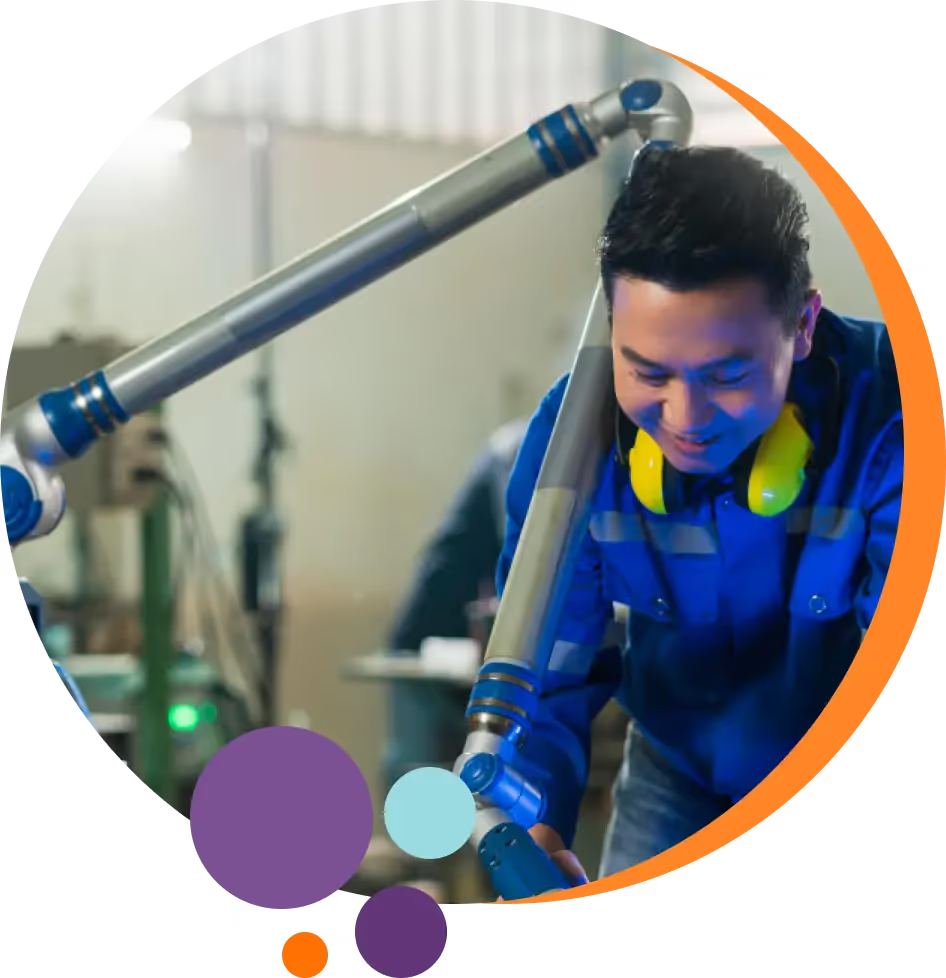Understanding Advanced Manufacturing
Let’s first understand what advanced manufacturing entails:
- Using artificial intelligence (AI), robotics, and automation to enhance manufacturing efficiency and precision.
- Employing 3D printing and additive manufacturing for rapid prototyping and custom parts.
- Leveraging data analytics and smart sensors for real-time decision-making and optimization.
Advanced manufacturing is also creating new career paths. As factories evolve, so do the jobs within them, creating a need for a new generation of workers who can navigate and harness these technologies.
Take the Ericsson 5G Smart Factory, for example.
It’s a full-scale operation that’s tapping into the power of 5G and Industry 4.0 to bring intelligent automation and real-time data into play.
This setup has already created over 500 new jobs. As the company website puts it, the 5G smart factory will help accelerate 5G deployment, which will give the US a first-mover advantage, create new jobs, and usher in a new era of technological advancement.
To fully realize these opportunities, companies, government bodies, and educational institutions must collaborate to ensure the necessary infrastructure, talent, and funding are in place.
Together, they can lead the way in opening doors to careers that are not only high-tech but also high-impact.
.webp)
The Different Aspects of Advanced Manufacturing
Advanced manufacturing uses a blend of digital tools and automation to streamline production, reduce waste, and respond quickly to changes in demand.
While we've covered the overall definition of advanced manufacturing, let’s delve into its different aspects to understand how it is reshaping industries and creating new opportunities.
AI, Robotics, and Automation
AI plays a crucial role in advanced manufacturing by analyzing data and making real-time decisions to improve efficiency and quality. For example, AI can predict equipment failures before they happen, allowing for preventive maintenance and reducing downtime.
According to Bain & Company, 75% of advanced manufacturing companies say adopting technologies such as artificial intelligence is their top engineering and R&D priority.
Robotics is another cornerstone of advanced manufacturing. Robots handle repetitive and physically demanding tasks with precision, freeing up human workers to focus on more complex and creative aspects of production.
Take Audi, the luxury car manufacturer.
It has 2,500 autonomous robots on its production line in its factory in Neckarsulm, Germany. Each robot is equipped with a specific tool, from glue guns to screwdrivers, and performs a specific task required to assemble an Audi automobile.
Automation enables machines to operate independently with minimal human intervention. In electronics manufacturing, for instance, automated systems can assemble circuit boards with a high level of precision.

Industry 4.0 and Machine Learning
Industry 4.0 is the term used to describe the current trend of automation and data exchange in manufacturing technologies.
It includes the integration of cyber-physical systems, the Internet of Things (IoT), and cloud computing. The fourth industrial revolution connects machines, systems, and products in a way that allows for seamless communication and coordination across the production process.
Machine Learning (ML), a subset of AI, is particularly important in this context.
ML algorithms analyze vast amounts of data collected from sensors and machines to identify patterns and optimize processes.
For instance, ML can be used to analyze production data to identify inefficiencies or predict when equipment will need maintenance, thereby reducing costs and improving productivity.
Sensors and 3D Printing
Sensors are essential in advanced manufacturing because they provide the data that AI and ML systems need to function.
They monitor everything from temperature and pressure to vibration and humidity to ensure production conditions are always optimal.
In smart factories, sensors can communicate with each other and with central systems to adjust operations in real time, improving efficiency and reducing waste.
3D printing, or additive manufacturing, allows manufacturers to create complex parts and prototypes directly from digital models, layer by layer.
3D printing is particularly useful in industries like aerospace, healthcare, and automotive, where it is used to produce lightweight components, medical implants, or customized tools with high precision.
This technology reduces material waste since it only uses the exact amount of material needed to create each part.
This can translate to significant cost savings. According to the 3D Printing Report 2024 by Protolabs, 82% of respondents said 3D printing helped them save substantial costs.

























